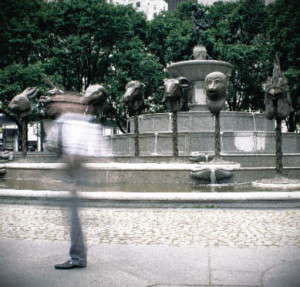
PAUL NATKIN’S COVER STORY left me wondering how music photography has fallen apart so dramatically, and what the next move is for shooters. Musicians certainly haven’t gained anything from this mess of “image management” and contracts that exploit shooters and their pictures. It goes without saying that no photographer has. As Photo Editor Matt Helminski pointed out in our Photo Issue (Elmore 35, November/December 2009), the explosion of iDevices and personal videos on YouTube has done no justice to artists, but does illustrate that consumer appetites are definitely not the problem—witness the mad triumphs of tabloid news. People and Us Weekly have a combined circulation of nearly 5.5 million per week. Rolling Stone, once rock ‘n’ roll journalism’s Holy Grail, guarantees their advertisers upwards of 1.5 million readers each issue, at 24 issues per year, but it looks more and more like its wildly successful sister Us with each passing edition. So if the demand remains, how did it all go so wrong? The answer may be nuanced and complex, but the bottom line is that it seems the music business is no longer a business with any room for the art of photography. That still leaves the question of where to go from here. Matt suggested that indie artists exploring new ways to build a career might offer budding young photographers the best shot at the access they need to do their jobs. If they do, we may get a fresh start over the next ten years. Documentation is vital, of course, for the sake of both the artists and their fans. My iPhone has captured concerts like a Dylan show last year that I can re-live with the flick of my thumb—my iPhone bobbing around in its brilliant, pixilated, 2-by-3 inch glory, recording my own personal joy. The magic in that moment was mine. But without someone in the pit that night, we all lost something a lot more poignant: Art.
When I was in art school, an aunt sent me a copy of The Story of Art, a 1950 book by art-historian-to-the-masses Ernst Gombrich. He was known for saying that there were no wrong reasons to love a piece of art, but there were lots of wrong reasons to dislike one. Maybe agents and managers have lost sight of the beautiful thing that they’re busy making money with. After all, what is music, if it is not art? As Gombrich said, “Taste in art is something infinitely more complex than taste in food and drink. It is not only a matter of discovering various subtle flavors; it is something more serious and more important. After all, the great masters have given their all in these works, they have suffered for them, sweated blood over them, and the least they have a right to ask of us is that we try to understand what they wanted to do.” Sounds like a live show to me. Too bad we’ve stopped letting shooters in to create pieces of their own that transport us back to that moment.
Perhaps we’ve forgotten that photographers are masters, too, offering us a window to a split second, to see as they wished us to see it. I haven’t. Here’s to the music business rediscovering the art—and value—of that window. —Erik Spooner



Be the first to comment!